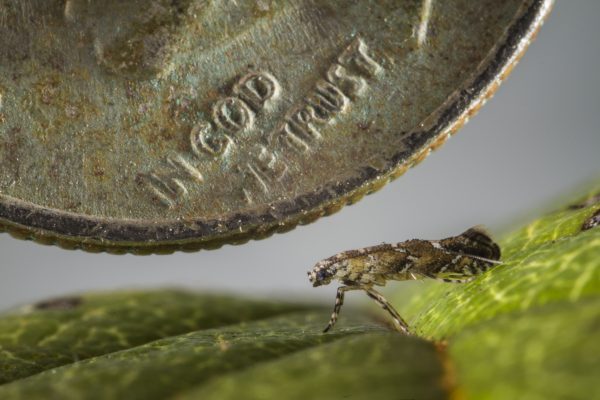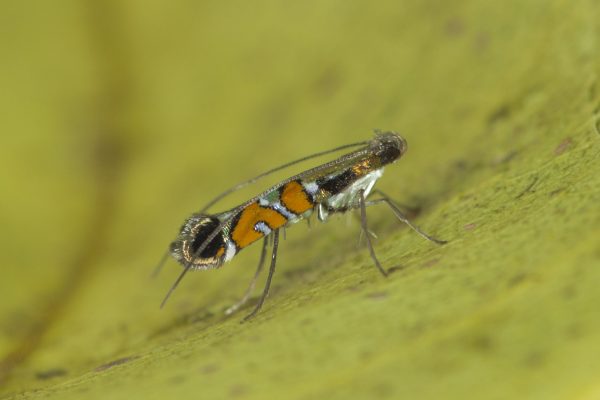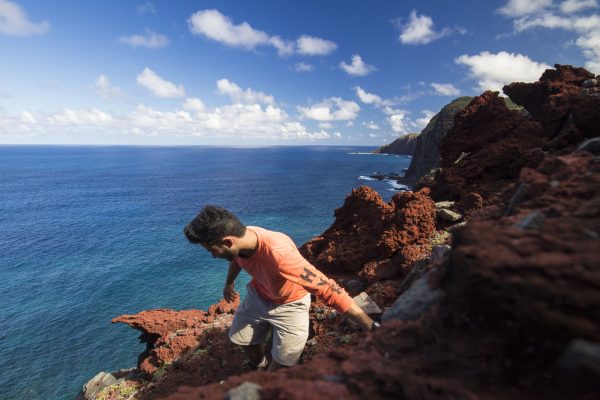
Florida Museum photo by Chris Johns
A Florida Museum of Natural History researcher has received $150,000 from the National Science Foundation to study endangered moth species in Hawaii that haven’t been seen for nearly 100 years and were believed to be extinct.
Assistant curator of Lepidoptera Akito Kawahara and his team will travel to Hawaii in July to collect samples of rare leaf-mining moths from the genus Philodoria, which have not been documented since the early 1900s. Researchers believed the moths to be extinct because farming and invasive species in Hawaii destroyed many of the moths’ host plants as the islands became more developed.
University of Florida graduate research assistant Chris Johns, who works with Kawahara, discovered the host plants and moths in remote locations on the Hawaiian Islands of Molokai, Oahu and Maui during a research trip in April and returned with photographs and distribution data to show Kawahara.

Florida Museum photo by Chris Johns
“I was stunned,” Kawahara said. “Almost a century of work had gone by and nobody had seen them.”
The adult moths are only a few millimeters long and difficult to find, but their larvae live inside the leaves of certain Hawaiian tropical plants, leaving distinctive and easily noticeable trails across the leaf as they feed.
Philodoria feed on 12 different plant families, from nettles to sunflowers, which is unusual for one genus of moth, Johns said. However, most individual species of Philodoria only eat one species of Hawaiian plant, so when a host plant is declared extinct, the moth species is assumed gone as well.
“Leaf miners get a lot of attention because many of them are major agricultural pests,” Johns said. Johns estimates there are about 30 Philodoria species and said museum researchers could possibly find up to 15 more in Hawaii.

Florida Museum photo by Chris Johns
Kawahara and his team plan to map the moths’ DNA sequences to determine how they colonized the Hawaiian Islands. With help from the grant, researchers will test the moths for bacteria to see if it allows some species in the genus to produce “green islands,” where the moth larva is able to keep a patch of the leaf alive to feed on while the rest of the leaf withers and dies. After their analyses, the moths will be added to the museum’s McGuire Center for Lepidoptera and Biodiversity collection.
“It’s a huge scavenger hunt,” Johns said. “It tells a good evolutionary story of how these moths came to the islands, and to be able to tell that story is really exciting.”
While in Hawaii, Kawahara’s team will give lectures and field trips to high school and college students and train residents to identify certain moth species.
For Kawahara, teaching younger generations about conserving plants and animals – even if it’s only the smallest moths – is an important goal.
“I think it’s really important to bring students into the field as the natural world is disappearing rapidly,” Kawahara said. “It really is essential – it’s our duty as scientists to show them the natural world out there.”
Learn more about the Kawahara Lab at the Florida Museum.
Learn more about the McGuire Center for Lepidoptera & Biodiversity at the Florida Museum.